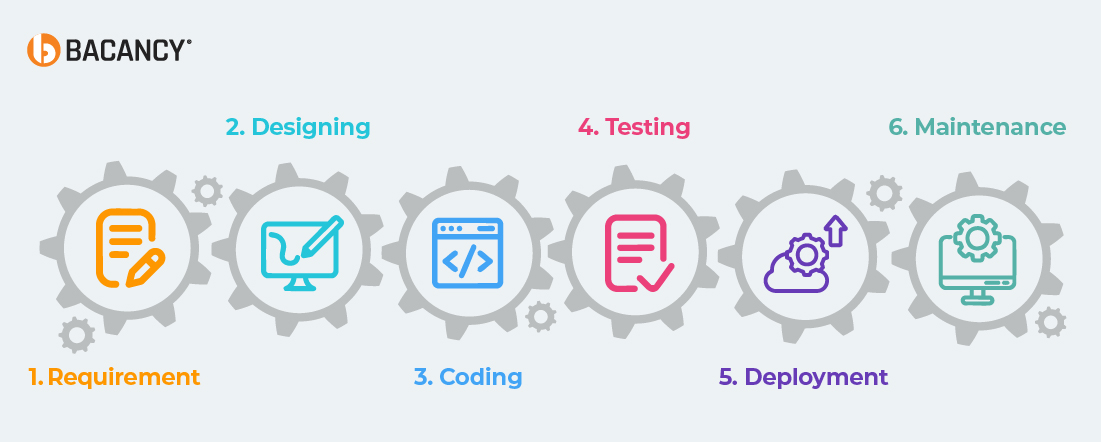Summary
The Embedded Software Development Life Cycle isn’t just a checklist, it is where performance, safety, and user experience begin. Whether you are working on an automotive ECU or a smart medical device, a clear embedded software development process helps avoid costly surprises. Each phase from design to requirement analysis to maintenance, is a chance to build reliable systems that stand up to real world demands.
Table of Contents
Introduction
In the world of intelligent machines and smart devices, there is an invisible core powering every real-time decision and every calculated response: embedded software. And behind that software lies a structured, strategic approach: the Embedded Software Development Life Cycle.
This blog walks you through the embedded software development process, covering each phase in detail, from gathering requirements to maintaining long-term performance. If you’re building firmware for critical equipment like EV chargers, industrial controllers, or medical tools, understanding this embedded system development life cycle isn’t optional. It’s essential.
What is the Embedded Software Development Life Cycle?
The Embedded Software Development Life Cycle (also known as Embedded Systems SDLC or Embedded Software Engineering Life Cycle) is a disciplined process of designing, building, testing, and maintaining software that runs on microcontroller-based systems. It guides how firmware is structured, deployed, and sustained over years, often decades.
In contrast to app or web development, this embedded software development process must operate under hardware constraints like limited memory, real-time performance, and fail-proof reliability.
Why It Matters
Smart hardware is only as reliable as the software running inside it.
Phases of the Embedded Software Development Life Cycle
Understanding why embedded software development is critical is just the beginning. To build robust, future-ready systems, each stage of the development life cycle must be executed with precision. Let’s walk through the key phases of the Embedded Software Development Life Cycle and explore how they shape reliable embedded solutions.

Phase 1: Requirement Analysis in Embedded Systems SDLC
Before writing a single line of code, engineers begin the embedded software development process by capturing constraints and stakeholder needs.
Key Activities:
- Define functional & non-functional requirements: memory limits, power consumption, real-time deadlines
- Collaborate with hardware teams for MCU selection, peripheral compatibility
- Use tools like JIRA for traceability
Real-World Use Case:
Bacancy worked with a medical device manufacturer to build firmware for a portable ECG monitor. During the requirement analysis phase, we ensured real-time signal capture, with industry level standards, and compatibility with low-power chipsets. That’s the strength of a robust embedded software development life cycle.
Phase 2: Designing the Embedded System Software Architecture
Great firmware begins with smart architecture. This phase defines how components interact, what runs where, and how easily the system can be scaled or updated.
Embedded Software Design Process Includes:
- Choosing between RTOS (e.g., FreeRTOS, Zephyr) vs. bare-metal
- Using modeling tools, such as MATLAB Simulink for behavior simulations
- Optimizing for flash and RAM usage from the start
Example:
For an EV AC charging station, Bacancy designed a layered embedded system software architecture that supported OCPP 1.6 with smart charging features. The firmware architecture also enabled future upgrades like OTA (Over-the-Air) updates and load management, showcasing the flexibility built into our embedded software development process.
Phase 3: Coding in the Embedded Software Engineering Life Cycle
This is where logic meets limitations. The coding phase in the embedded software engineering life cycle isn’t just about writing functions, but about designing efficient algorithms and writing resilient code that runs predictably under constraints.
Best Practices:
- Language use: C for drivers, C++ for modular design
- Avoid dynamic memory; prefer static buffers
- Use HALs (Hardware Abstraction Layers) for portability
- Emphasize determinism in execution timing
Example:
For a surgical laser control system, Bacancy partnered with Innovoyce, a medical device manufacturer, to develop ultra-precise embedded firmware. The software had to meet sub-100µs timing accuracy for laser pulses, continuously monitor for real-time faults like overheating and power fluctuations, and comply with IEC 60601 safety standards. Through careful design and rigorous testing, the firmware received FDA approval, demonstrating the strength of our structured embedded software engineering life cycle.
At Bacancy Systems, we combine deep technical expertise with proven processes to deliver embedded software that’s safe, scalable, and production-ready.
Phase 4: Testing in the Firmware Development Life Cycle
Testing is never an afterthought in the firmware development life cycle. It’s a continuous checkpoint.
Testing Methods in SDLC in Embedded Systems:
- Unit testing with frameworks like Unity or CppUTest
- Static code analysis for MISRA-C compliance (e.g., CppCheck)
Example:
For an automotive telematics unit, Bacancy conducted extensive manual testing to validate CAN bus communication under varying temperature and voltage conditions. We integrated static code analysis and runtime profiling tools to catch issues early in the development cycle. This hands-on approach, combined with rigorous environmental stress testing, ensured the firmware met real-time performance benchmarks and industry standards. By focusing on reliability during this phase, we strengthened the system’s performance in real-world scenarios, showcasing the value of a structured embedded software development process.
Phase 5: Deployment in the Embedded Systems SDLC
Releasing firmware to devices isn’t a one-time event. The deployment phase in the embedded software development life cycle covers flashing, validation, and versioning.
Key Activities:
- Flashing via J-Link, ST-Link, OpenOCD
- Secure boot with tools like MCUboot
- Enable OTA with platforms like AWS IoT OTA or Azure IoT Hub
- Validate with watchdog timers, power-on self-tests
- Rolling out security patches or feature improvements
- Remote diagnostics through logging and crash analytics
- Creating feedback loops to improve future versions
- Automotive (ISO 26262 ASIL compliance)
- Healthcare (IEC 62304 medical standards)
- Industrial Automation
- EV and Energy Systems
- Specialists in phases of embedded software development, from bare-metal firmware to cloud-connected ecosystems
- Structured embedded software engineering life cycle for zero-recall deployments
- Mastery in modeling, RTOS configuration, OTA design, and field diagnostics
Example:
A Smart meter firmware update was deployed by Bacancy with fail-safe OTA protocols, ensuring no service interruptions even in edge locations.
Phase 6: Maintenance in the Embedded Software Development Process
Work with our embedded experts who specialize in RTOS, low-level programming, and long-term system reliability.
The most underestimated phase, yet often the longest, is maintenance. Systems may run for decades. That’s why this phase is key to your long-term success.
What It Covers:
Example:
We enabled predictive maintenance for a PLC system by analyzing runtime logs and making micro-adjustments to firmware performance. This is the hidden ROI of a structured embedded software development process.
Why Choose Bacancy for Your Embedded Software Development Life Cycle?
We don’t just write code, we build intelligent, real-time systems that last. With decades of combined expertise, we’ve helped 100+ OEMs across:
What Makes Us Different:
We don’t just ship firmware, we build the brain that drives your product.
Conclusion
A well-executed embedded software development life cycle builds more than just code, it can be the difference between launch success and expensive recalls. With defined phases, the right tools, and a committed engineering partner, your firmware becomes scalable, secure, and future-ready.
Let Bacancy help you transform your embedded software development process. We deliver end to end solutions across every phase of the firmware development life cycle combining deep technical know-how with hands-on testing.
Ready to build the brain behind your next smart device?
Contact us to learn how we can support your next embedded systems SDLC journey.
Frequently Asked Questions (FAQs)
The embedded software development life cycle includes requirement analysis, system design, coding, testing, deployment, and maintenance.
Yes. The SDLC in embedded systems involves additional constraints like hardware integration, real-time execution, and long-term field reliability.
A well-planned embedded system software architecture defines module interaction, ensures scalability, and simplifies maintenance.
Your Success Is Guaranteed !
We accelerate the release of digital product and guaranteed their success
We Use Slack, Jira & GitHub for Accurate Deployment and Effective Communication.

